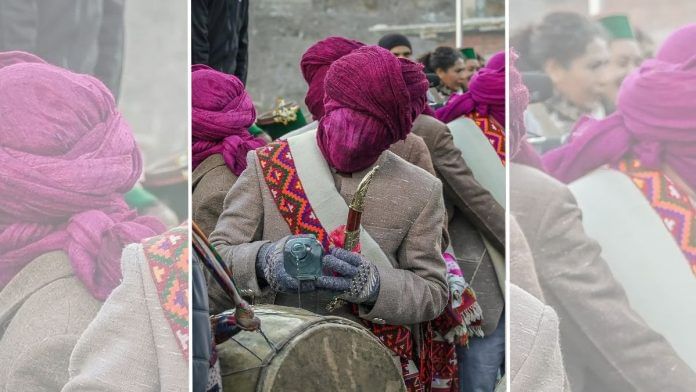New Delhi: A man stood in the middle of a village square in Himachal Pradesh, his face wrapped in a deep pink cloth, absorbed in a ritual only his people understood.
When the photo hit social media, the mystery of it—the hidden face, the heavy woollens, the crowd gathered in the snow—pulled attention to a festival most Indians had never heard of.
That moment of curiosity led people to Raulane, a 5,000-year-old winter ritual from Kinnaur that had quietly lived on in the mountains, far from the country’s cultural map until this week.
These pictures are absolutely dominating the internet today ! 🥵🔥#HimachalPradesh #Raulane pic.twitter.com/plF8GIimW1
— Tanmay Kulkarni 🇮🇳 (@Tanmaycoolkarni) November 15, 2025
The Raulane ritual
In parts of Kinnaur, Kullu, and Manali, villagers and tribal people celebrate Raulane as they gather after the harvest for a mix of temple rituals, folk songs, and community–led traditions. The festival is rooted in the belief that Saunis, or celestial beings that guard villages through winter, descend during the period to guard homes, people, crops, and livestock.
Celebrated in the harshest winter season, Raulane for the villagers is not just a celebration but more of a ritual between humans and supernatural beings, where faith, protection and winter all come together.
The viral photo featured the man pouring alcohol on a drum, a ceremonial knife in his other hand. In another viral image, a person stood with their entire face covered by silver jewellery, beads, turquoise stones, and woollen pompoms.
Other photos featured the village courtyard, circled by snowcapped mountains, occupied by a small crowd as it watched the beautifully dressed participants dance in a circular formation.
As part of the ritual, to honour the Saunis, men symbolically marry each other. One of them becomes Raula, or groom, and the other, Raulane, or bride. They wear masks, heavy robes, and jewellery. Then, they perform a slow, meditative dance at the Nagin Narayan Temple, which reassures the community that winter will pass. Villagers believe such performances invite blessings from the Saunis and strengthen ties with ancestors and nature.
Also read: Granta’s India issue goes into the heart of ‘vikas’. Restlessness written all over it
Kinnaur is home to one of the world’s oldest mountain civilisations. It held ground through avalanches, invasions, and migration. And Raulane sits at the centre of that legacy. For people of Kinnaur, the festival is a huge part of how they’ve held onto their faith and memories.
The villagers spin wool at home, masks are carved out by local hands, and the music is created with traditional instruments.
Social media might have discovered the Raulane ritual in 2025, but in Kinnaur, the rituals will continue long after the cameras leave. It will be carried by people who know that some traditions survive not because they are old, but because they matter to people.
(Edited by Prasanna Bachchhav)






